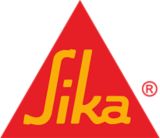07/04/2025
At Sika, we’re keen to share the knowledge we possess and encourage conversations around how best to work in an ever-changing industry. We were recently pleased to deliver an online webinar which focused on the topic of basement waterproofing, centring specifically around best practices for refurbishing below-ground spaces.
A shortened summary of the key elements to this webinar can be found below and to watch the session in full, visit:
Basement Waterproofing: Best Practices for Refurbishing Below-Ground Spaces
Industry standards & regulations
An important place to start is BS 8102:2022, which is the British Standard Code of Practice for waterproofing below-ground structures. It really is the industry bible when determining the level of waterproofing that's required for a structure and is widely used for basements, tunnels, and other similar structures.
BS 8102:2022 addresses recent industry developments, such as deeper construction in urban areas and how that affects things like surrounding basements, plus the increase in residential basements especially over the last five to 10 years. In areas like London, where space is so important, significantly more, deeper basements are being built, which means solid waterproofing is arguably more vital than ever.
Revised in March 2022, BS 8102:2022 includes updated guidance on basement refurbishment, risk management, and water ingress considerations. It stresses the need for early involvement of a waterproofing specialists in the design phase, whether that's an independent design specialist, or support and advice from a reputable manufacturer, like Sika, in the selection of appropriate materials for the specification.
A comprehensive refurbishment section has now been added to BS 8102:2022 which covers what to do when you're undertaking waterproofing in a basement refurbishment, and it notes that contractors have an obligation to manage risk and develop a water management plan.
Waterproofing methods & systems
There are three types of waterproofing protection, as spoken about in the webinar:
- Type A (Barrier Protection): Cementitious coatings, renders, or membranes applied to walls to prevent water ingress.
- Type B (Structurally Integral): Uses waterproof concrete or admixtures to provide built-in resistance.
- Type C (Drained Protection): Cavity drain systems that collect and redirect water away from the structure.
Choosing the right system: Type C is often preferred for refurbishment due to its flexibility and repairability. On the other hand, Type A multi-coat renders provide a permanent, maintenance-free solution but require careful application. A combination of approaches may be needed for high-risk environments.
Basement grading & client expectations
The four grades of basement waterproofing are as follows:
- Grade 1A: Some seepage and damp patches allowed.
- Grade 1B: No seepage, but damp patches acceptable.
- Grade 2: No water ingress; only condensation-related damp is tolerated.
- Grade 3: Fully dry internal environment (e.g., habitable spaces).
When it comes to understanding client needs, it’s essential to determine the acceptable damp levels and future use of the space. Any waterproofing work should align with the long-term building plans and maintenance capabilities in order to provide a successful solution.
Key considerations for successful basement refurbishment
For any successful basement refurbishment, key considerations must be made at the start of the project to attain the desired outcome. This should include…
Risk assessments:
Factors like water table levels, ground conditions, and hydrostatic pressure must be evaluated.
Proper detailing & installation:
Critical areas (wall-floor junctions, construction joints) must be carefully detailed. Waterproofing continuity is essential to prevent weak points.
Maintenance & costs:
Type C systems require regular pump maintenance. Type A renders are maintenance-free but require correct substrate preparation.
Sika’s expertise & support
Sika is a leading expert in waterproofing solutions and Sika products have been used to waterproof structures since 1910. We provide full waterproofing solutions (Types A, B, and C) and have been involved in high-profile projects around the globe.
For partners, Sika can offer on-site technical support, guarantees, and guidance on project-specific challenges.
More recently the business has launched Sika®-1 Pre-Bag LC Render System, a low cement render which is a spray-applied cementitious system with 80% less cement and a lower carbon footprint.
To find out more about this and other Sika products or watertight concrete systems, please email waterproofing@uk.sika.com or call 0800 292 2572.

